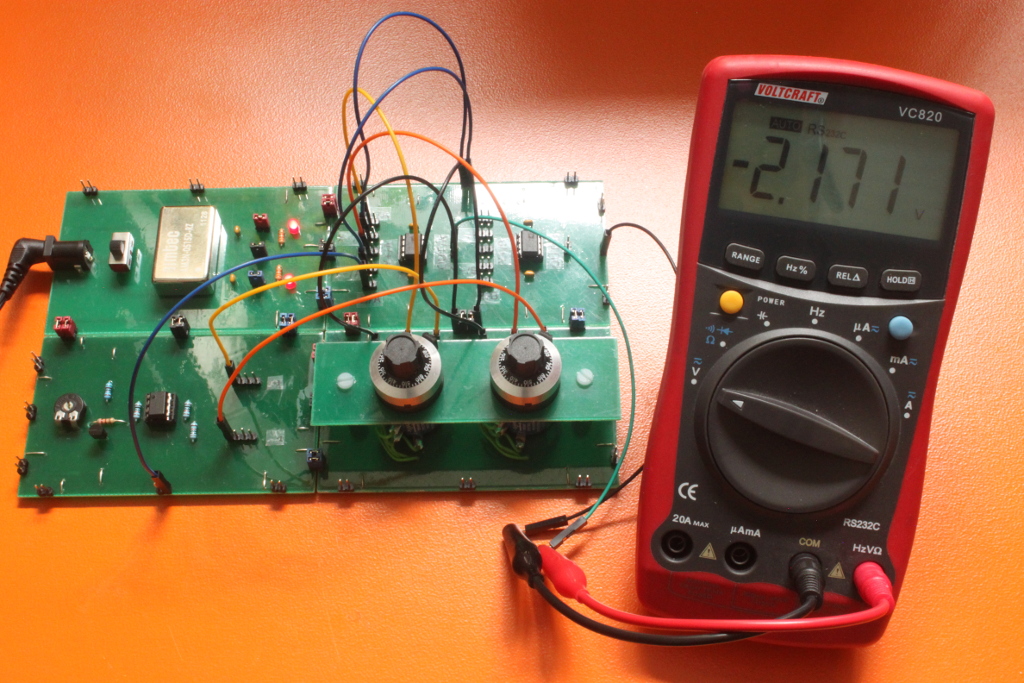Calculating the product of two variables
In this example i set the left potentiometer to produce 7V (value 0.7) and the right potentiometer to produce -3V (value -0.3). These voltage are fed into the X + and Y + inputs of the AD633 multiplier. X - , Y - and Z are connected to ground. The AD633 then calculates the output voltage
f(x+, x-, y+, y-, z) = 0.1 * (x + - x-) * (y + - y-) + z = 0.1* 7 * (-3) = 2.1
The measured voltage is 2.171V and so we conclude (remember: the unit of calculation is 10V) that 0.7 * (-0.3) is approximately 0.2171 plus/minus a huge error margin.
This example shows why we need to set the unit to 10V and why the multiplier divides the product by 10. If we had multiplied 3V directly with 7V, this would have resulted in 21V, which is above the 15V of our power supply.
